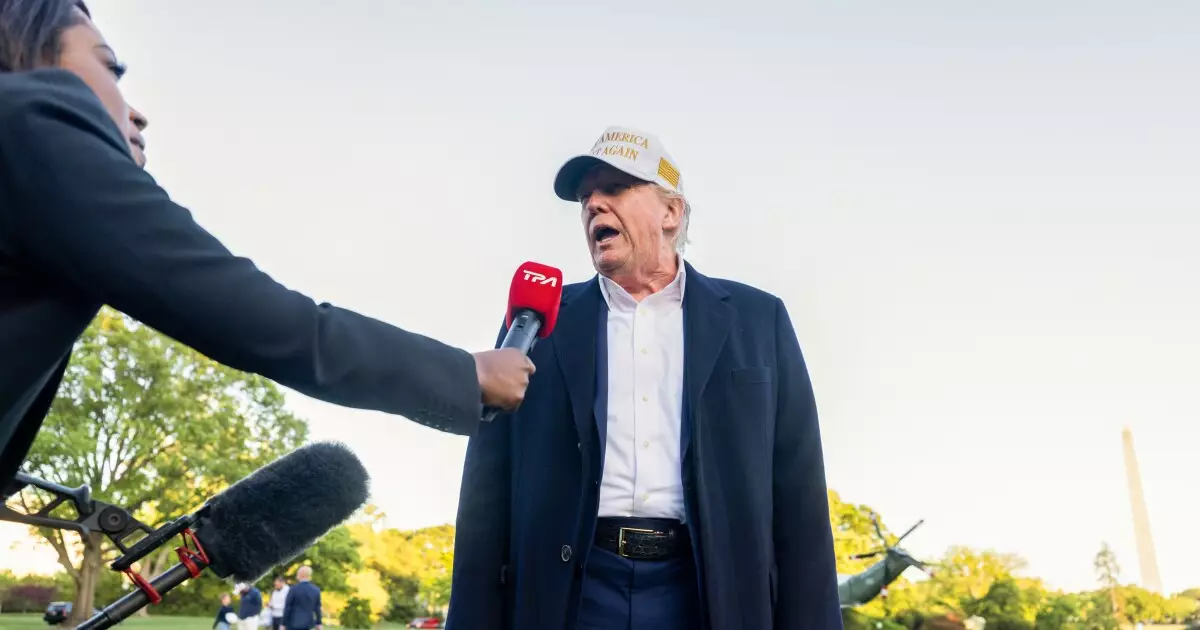Sanctuary cities have become a hotbed of controversy, igniting vehement debates across the United States. At the heart of this issue lies a critical question: should local jurisdictions take it upon themselves to defy federal immigration laws to protect undocumented immigrants? While the intention behind such policies may stem from a desire for inclusivity and compassion, the implications often paint a grim picture. Sanctuary cities not only challenge the rule of law but also endanger the very communities they aim to protect. In the latest executive order by President Donald Trump, a clear message was sent: the federal government will take necessary steps to ensure compliance with immigration laws, with financial consequences looming for those that defy them.
Financial Consequences and Legal Pushback
Trump’s directive to the Justice Department to identify non-compliant cities speaks volumes about the ongoing struggle between federal authority and local autonomy. This 142nd executive order within just over three months of his administration reflects a determined fight against what he considers lawlessness. Identifying sanctuary cities like Philadelphia and Massachusetts as “obstructionist” underscores a sentiment shared by many Americans: public safety should never be compromised for the sake of political correctness.
However, the interim legal victories secured by these city governments, showcased by a federal judge’s injunction, illustrate the precarious balance of power. While local governments argue that withholding funds violates their autonomy, the larger narrative questions the moral responsibility of these cities. Are they prioritizing political sentiments over the collective safety of their communities? It becomes an essential topic for discourse, especially within the framework of center-right liberalism, where individual responsibility and rule of law should take precedence.
Public Safety as a Grand Narrative
The leading narrative in a democracy should be public safety. Within that framework, individuals living in sanctuary cities face a complex reality. Local officials who promote policies shielding undocumented immigrants may inadvertently create environments where criminals feel emboldened. Incidents of crime often go unreported when victims fear deportation more than facing their assailants. Being a sanctuary city inherently complicates law enforcement efforts, creating divisions between immigrant communities and police departments.
The statements by White House Press Secretary Karoline Leavitt encapsulate a straightforward truth: real public safety demands obedience to the law. The implications of opposing federal immigration enforcement can allow dangerous individuals to remain in communities. Trump’s executive order challenges cities to reexamine their motives—are they prioritizing the tenuous notion of sanctuary over the tangible safety of their residents?
A Historical Context of Immigration Policies
This isn’t the first time such issues have landed in the courts. During Trump’s first term, we witnessed a similar struggle when federal courts upheld limited authority for the administration to withhold funds from sanctuary cities. This echoes prior administrations, such as Obama’s, showing a historical trend of executive overreach that prompts state and local officials to challenge federal directives.
Sanctuary policies have evolved into a mechanism for local governments to assert a degree of resistance against federal mandates. However, this resistance risks creating a divided nation. Ultimately, and irrespective of one’s political beliefs, there’s an intersection of values between safety, community cohesion, and law enforcement that can’t be ignored. When cities adopt a stance that permits individuals to evade federal scrutiny, they contribute to an environment fraught with uncertainty and distrust.
The Path Forward: Rethinking Policies
In light of the ongoing debates and legal disputes, a critical reassessment of sanctuary policies seems both necessary and urgent. Local governments must engage with their communities in ways that prioritize public safety while respecting the humanity of all residents, including undocumented immigrants. Equally, the federal government should recognize and work to address local concerns without compromising individual accountability.
The impacts of such decisions ripple far beyond mere political rhetoric. They resonate deeply within the communities that bear the consequences of these policies. As this discourse evolves, the emphasis must shift toward creating solutions that foster both safety and sound governance. Ultimately, establishing a unified approach will require illuminating the stark realities of public safety amid an increasingly polarized landscape.

